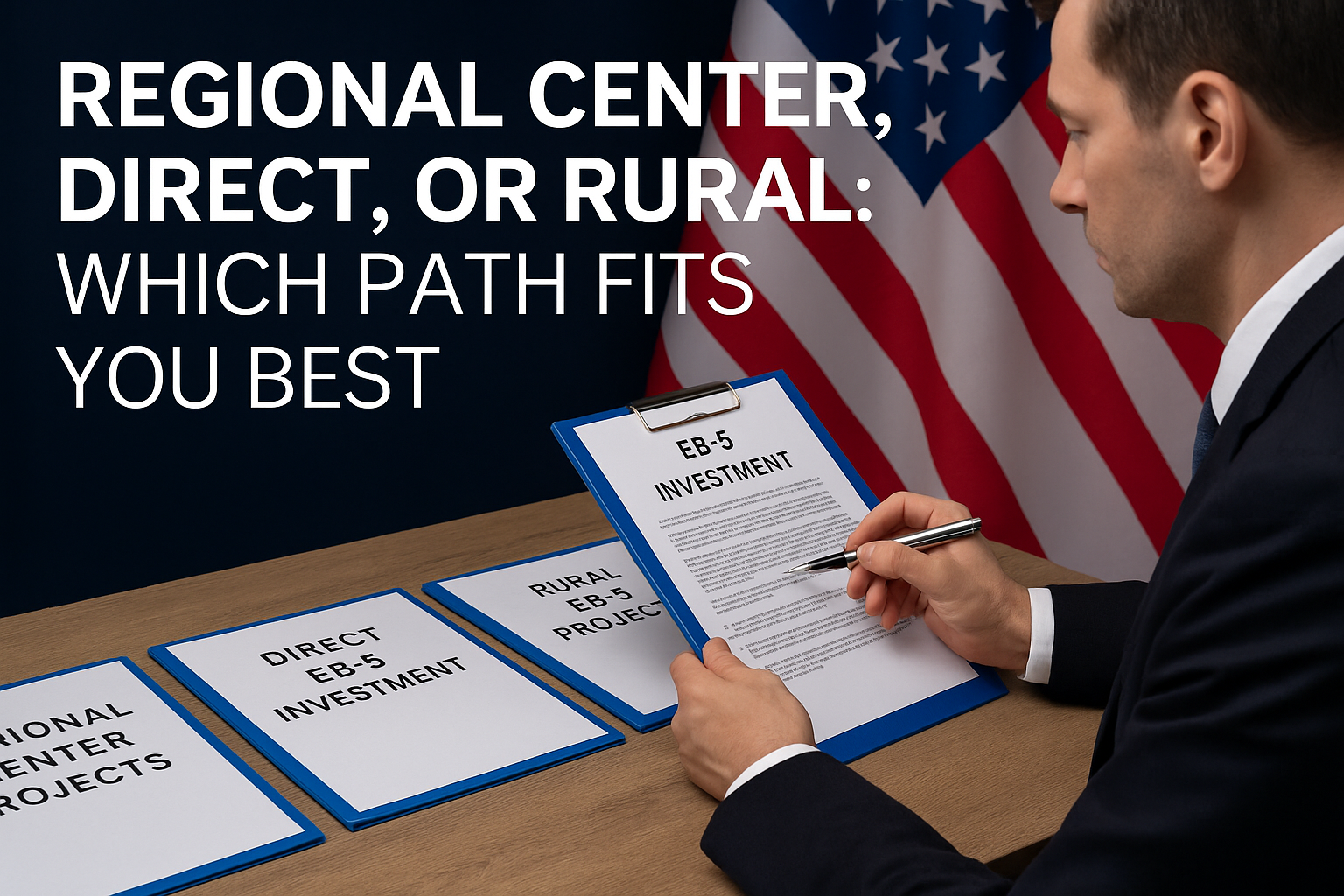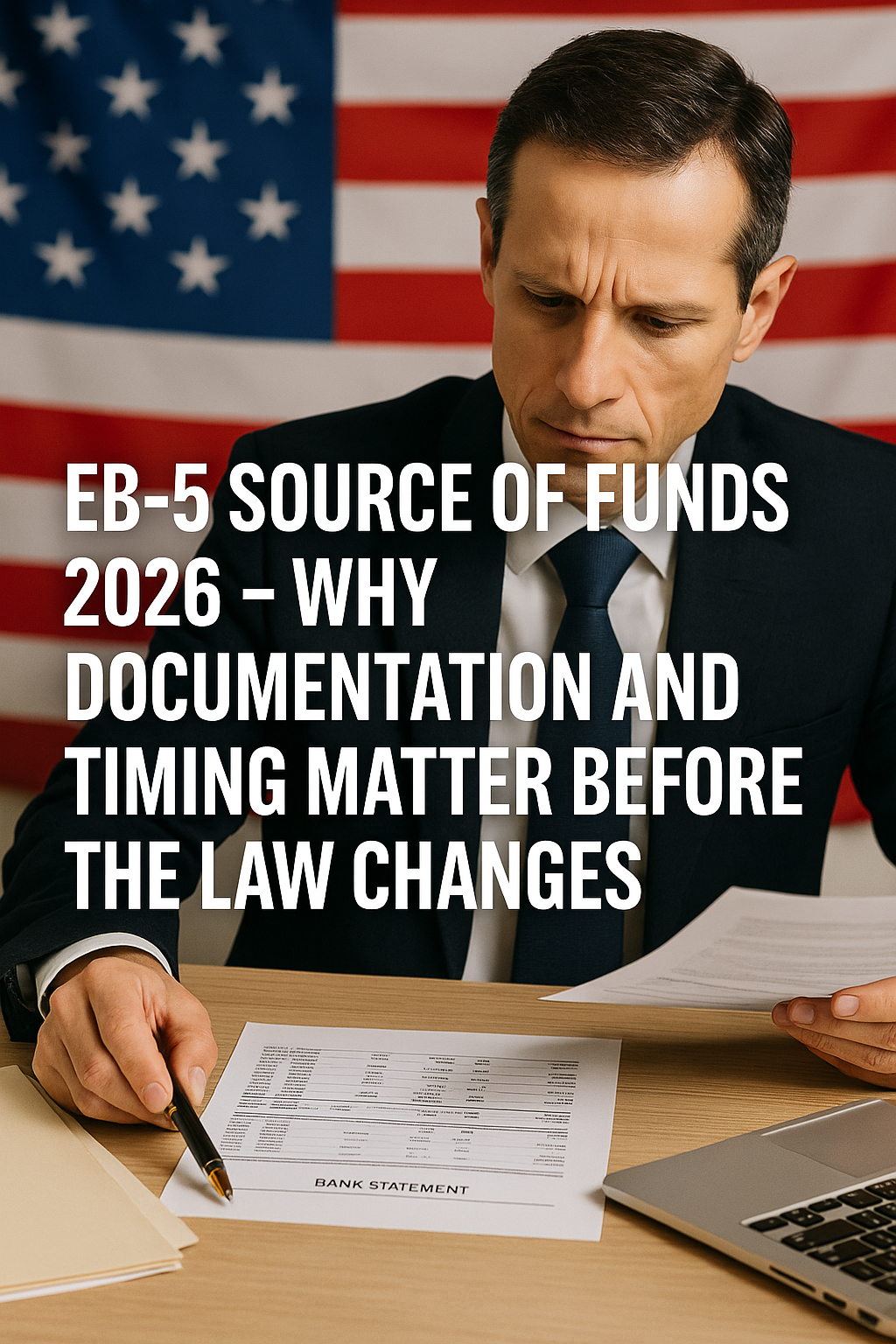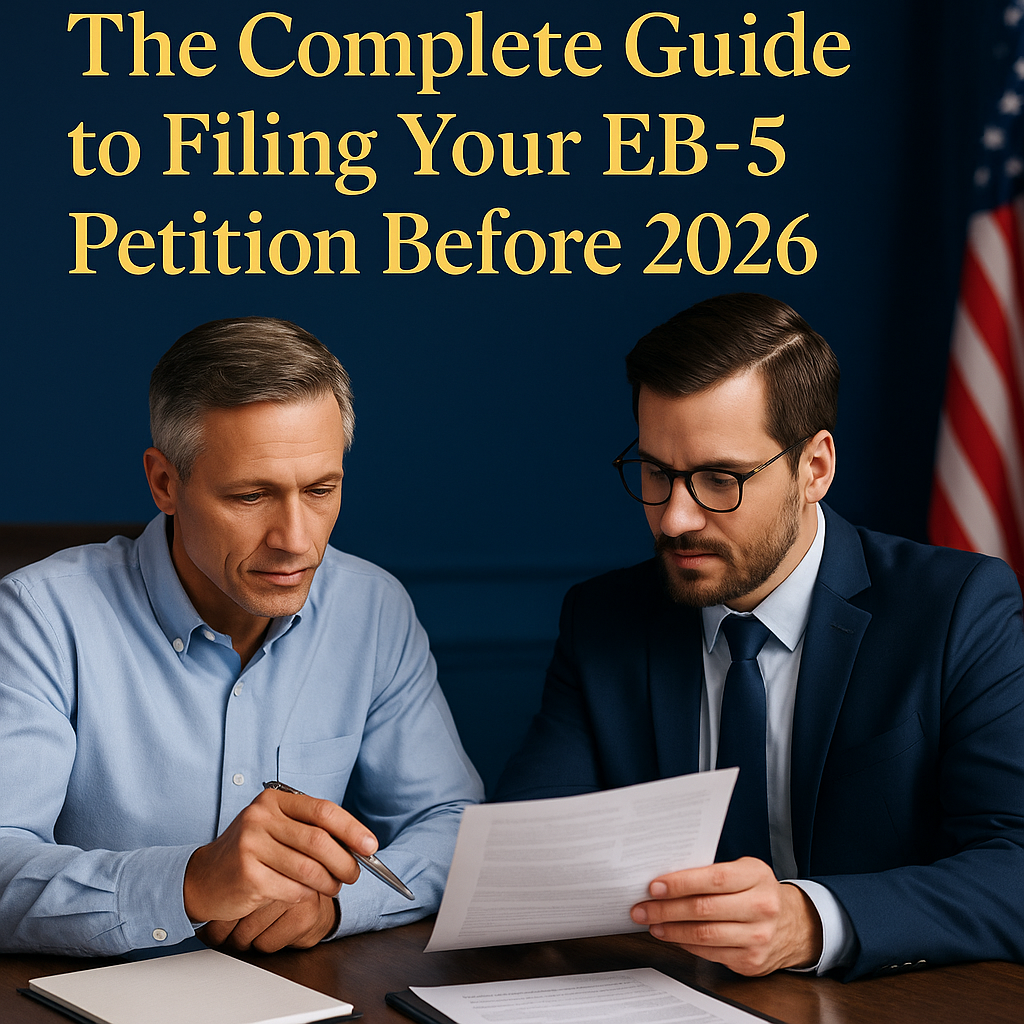Every five years, the EB-5 Immigrant Investor Program faces a moment of renewal.
The current version, shaped by the EB-5 Reform and Integrity Act of 2022, will remain valid only until September 30th, 2026. After that date, Congress will determine whether to reauthorize, revise, or temporarily suspend the program.
For investors, this deadline represents more than a date. It defines certainty versus speculation, predictability versus risk. Understanding what could change after 2026 helps you make informed decisions before the window closes.
Why the 2026 Deadline Matters
When the EB-5 Reform and Integrity Act was enacted in 2022, it established clear investment thresholds and strict compliance rules that restored global confidence in the program. These provisions are time-bound, set to expire unless renewed.
If the law lapses or is amended, USCIS may pause new applications until Congress acts. During the 2021 lapse, for example, the Regional Center Program was suspended for nine months, leaving thousands of investors in uncertainty.
Investors who file before September 30th, 2026, are protected under the grandfathering clause of the 2022 Act. This ensures that even if the law changes afterward, your petition will continue under the current framework.
Historical Pattern of EB-5 Policy Changes
The EB-5 program has evolved repeatedly since its creation in 1990.
- 1990–2010: The law was renewed multiple times with few changes.
- 2019: The Department of Homeland Security increased minimum investment levels by nearly 80 percent overnight.
- 2021: The program lapsed temporarily due to legislative delays.
- 2022: Congress passed the Reform and Integrity Act, introducing strong compliance standards and restoring the Regional Center framework.
This history shows a clear pattern: each reauthorization either increases capital requirements or expands regulatory control.
The next cycle in 2026 will probably follow the same trend.
Potential Scenarios After 2026
While no one can predict exact policy outcomes, several likely scenarios can be anticipated based on current legislative discussions and industry trends.
Scenario 1: Program Renewal with Higher Investment Amounts
The most likely change is an increase in minimum investment thresholds to adjust for inflation.
TEA investments could rise from 800,000 to 900,000 or 1 million USD, while non-TEA projects may reach 1.2 to 1.5 million USD.
For investors planning to file, this represents a potential increase of 100,000 to 400,000 USD.
Scenario 2: Enhanced Due Diligence and AML Requirements
Congress may introduce stricter documentation for the source of funds, tax compliance, and anti-money-laundering verification.
Future petitions could require certified tax transcripts, third-party accounting audits, or cross-border financial reports.
Scenario 3: Revised Visa Allocation and Country Caps
Lawmakers may reconsider how EB-5 visas are distributed by country. While rural and TEA set-asides are expected to remain, priority allocations might shift.
Investors from high-demand countries such as Vietnam, India, and China should take advantage of the current reserved categories while they remain favorable.
Scenario 4: Temporary Program Pause
If reauthorization takes longer than expected, USCIS may again suspend new filings. Existing cases will continue processing under the grandfathering clause, but new investors will have to wait for renewal.
Market and Regulatory Factors Driving Future Reform
The EB-5 program now sits at the intersection of immigration, finance, and national security. Several external forces could influence the 2026 review:
- Economic Recovery Priorities: The U.S. may adjust EB-5 capital flow to target specific infrastructure or green energy sectors.
- Geopolitical Shifts: Sanctions and foreign investment screening may affect how funds from certain regions are reviewed.
- Compliance Technology: Future reforms may require digital fund tracing or blockchain-based verification for cross-border transactions.
- Regional Center Oversight: USCIS may expand its authority to audit or terminate underperforming centers to maintain program credibility.
Why Filing Before 2026 Protects You
Investors who file under the current EB-5 Reform and Integrity Act secure significant benefits:
- Fixed investment amount at 800,000 USD for TEA or 1,050,000 USD for non-TEA projects.
- Eligibility for reserved visa categories that shorten wait times.
- Defined documentation requirements that are already approved and widely understood by adjudicators.
- Legal protection under the grandfathering clause, meaning your petition remains valid even if the law changes later.
Filing after the sunset date exposes investors to unknown capital levels, new eligibility rules, and possible processing delays.
The Investor’s Strategy for 2025–2026
To stay ahead of potential changes, investors should:
- Begin preparing source of funds documentation now, ensuring bank transfers and tax filings are fully aligned.
- Select a compliant Regional Center project with a valid USCIS designation and fund administration system.
- File Form I-526E at least six months before the September 2026 deadline to avoid last-minute delays.
- Consult an immigration attorney experienced in post-2022 filings for accurate guidance.
These proactive steps ensure that your petition remains secure even if Congress updates or redefines the program after the renewal date.
The Future of EB-5
The EB-5 program continues to play a vital role in U.S. economic development. It has financed thousands of jobs through hotels, infrastructure, and technology investments across the country.
Given its contribution to local economies, it is highly likely that Congress will renew the program in 2026.
However, renewal nearly always brings reform. Investors who understand the timing of these cycles will benefit from lower entry costs, faster processing, and stronger legal protection.
Conclusion
The EB-5 law that exists today is stable, transparent, and clearly defined.
The law that follows may be more complex, more expensive, and more restrictive.
The most successful investors act before change, not after it.
By preparing your documentation, selecting a qualified project, and filing your petition under the current law, you protect your investment and your family’s immigration future.
The 2026 deadline is not the end of EB-5, but it is the end of this era of predictability. Acting before that moment is your advantage.
Part of The EB-5 Countdown Series 2026
This article is part of The Immigration Magazine’s exclusive editorial collection:
“The Final Window: Secure Your U.S. Green Card Before the Law Changes.”
Read the full EB-5 Countdown Series 2026 at www.the-immigration.com, the trusted publication for EB-5 law, investor strategy, and residency by investment insights.
Subscribe to The Immigration Magazine newsletter to receive the full series EB-5 2026 Guide and expert insights before the program’s renewal date on September 30th, 2026.
The EB-5 Countdown Series 2026 | An Exclusive Editorial by The Immigration Magazine












